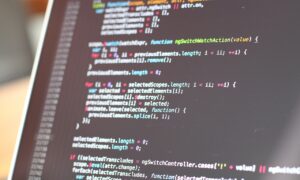The introduction of big data in various areas of human activity has completely changed our perception of business and technology. The need has arisen to use special tools to extract, analyze, and process huge amounts of data.
This is how web scrapers came about. Its main task is to eliminate problems in understanding complex data. It converts unstructured or unreadable information into structures that are as simple and comprehensible as possible.
Web scraping (also known as screen scraping, web data mining, web harvesting, web data extraction, and web data parsing) is also a type of mass information retrieval. It is the process of collecting information en masse from various websites.
This process allows you to collect unstructured data from third-party websites and provide it in a structured form by uploading it to your server in HTML, JSON, XML, CSV, XLSX formats.
This enables product and price comparison, analysis, and, if necessary, visualization of the data. The programs needed to collect the information are called parsers or scrapers and are written in different programming languages, mostly the following: Ruby, cURL, Python, Node.js, C#, PHP, Java, GoLang, etc.
Examples of the Use of Web Scraping
- Company X will sell its product on Amazon. By analyzing the prices, it is possible to track their evolution and the number of similar products sold on Amazon.com and/or Amazon.de. This is needed to choose the best price and predict the sales volume.
- Company Y develops a website or an app to select hotels in a vacation area. It needs to collect all information about hotels in this region (location, descriptions, prices) from Airbnb, Booking, Hotels.com, Google Hotels, and regional websites. Not all of these websites make information available to third-party developers via an API.
Scraping is not the same as an API. For example, a company may provide an API to allow other systems to interact with its data; however, the quality and quantity of data available through the API are usually lower than that which can be obtained through web scraping.
In addition, scraping provides more up-to-date information than the API and is structurally much easier to set up.
What Role Do Proxies Play in Scraping?
The need to use a large number of proxy servers is unavoidable in the case of mass parsing/scraping. Proxy servers are used in web scraping primarily to protect against blocking by the server hosting the target site.
During scraping, your IP address sends requests to the server, and if you send too many requests in a short time or request too much data, the server may block your IP address.
With a proxy server, you can hide your real IP address and send requests on behalf of another server. This can prevent your IP address from being blocked and reduces the risk of your scraper being identified and blocked.
In addition, using a proxy can increase the speed of the analysis, as you can distribute the requests to multiple proxy servers, allowing you to analyze more data in less time.
What Types of Proxy Servers Are Best Suited for Scraping?
There are many different proxy servers. The most suitable proxies for data collection are data center-hosted proxies and mobile proxies.
Data Center Hosted Proxies
The IP addresses of such proxies are registered to IT companies. The software of such proxies is hosted in data centers. This is one of the fastest and cheapest proxies. The biggest advantage of such proxies is that there are no charges for the data traffic used. This means that you can download and upload any amount of data. This does not increase the price in any way.
An example of one of the services that offer access to proxy servers of this type is Fineproxy.de. The price for 1 IP address of a proxy starts at 6 cents, making it the lowest of all similar services.
Mobile Proxies
The IP addresses of these proxies are formally registered with mobile Internet providers, but in reality, they are not and are used exclusively as proxies. The software is hosted on dedicated servers in specially set up “mobile farms.”
Mobile proxies are much more expensive and should only be used in exceptional circumstances when scraping websites that are protected from mass data collection. This therefore means when a captcha is specified instead of the page content. It should be borne in mind that such services are charged separately for the data traffic used in addition to the basic fee for the service. This can have a significant impact on the final costs.
Tips for Effective Data Collection
- You should comply with the legislation and obtain the owner’s consent for data collection.
- It is illegal to collect confidential information, business or state secrets.
- It is not permissible to use web scraping to block a website with a large number of requests. Since the principle of scrapers is based on the collection of data through a series of queries, they can be used by unscrupulous users for the purpose of a DDOS attack that leads to the failure of the website.
- When scraping, it is not advisable to download images. You only need to parse the link to the image. Otherwise, there will be copyright problems and a lot of data traffic will be wasted.
- You should choose proxy servers that are as close as possible to the web server of the target site. A proxy server in Germany, for example, is ideal for scraping European websites.
- If you’re not sure what type of proxy you need, it’s best to start with a data center-hosted proxy. If your data collection efficiency proves to be poor, you should switch to a mobile proxy.
- You should not collect any personal data from user accounts. This also applies to the collection of non-personal data, the disclosure of which is prohibited by the owner of the website or the user himself.
- Scraping a website in a cloud (e.g., Cloudflare) is not a problem. The problem is very often the scraping speed. The more captchas there are, the more expensive scraping becomes. You can connect the anticaptcha function.



































